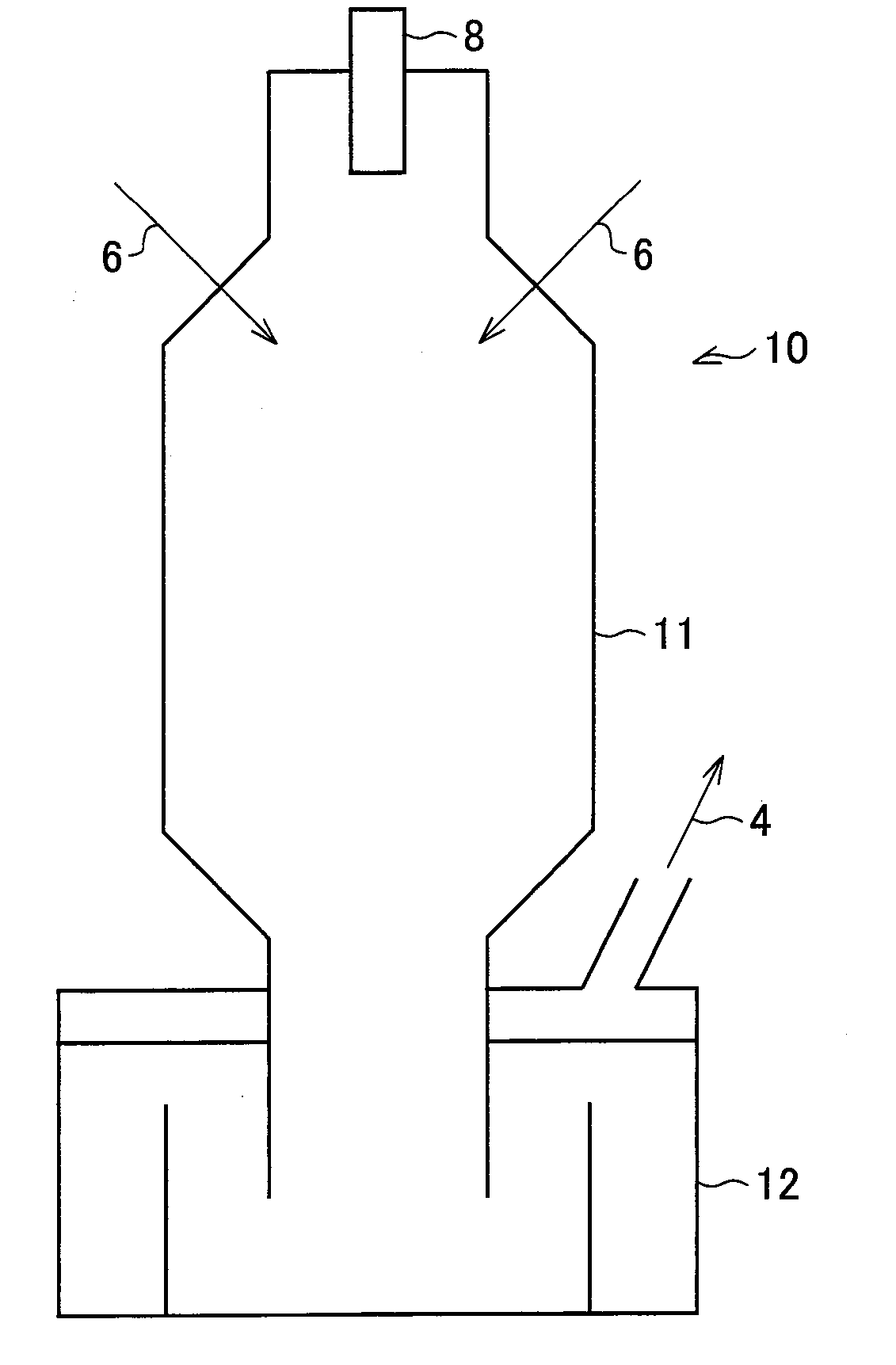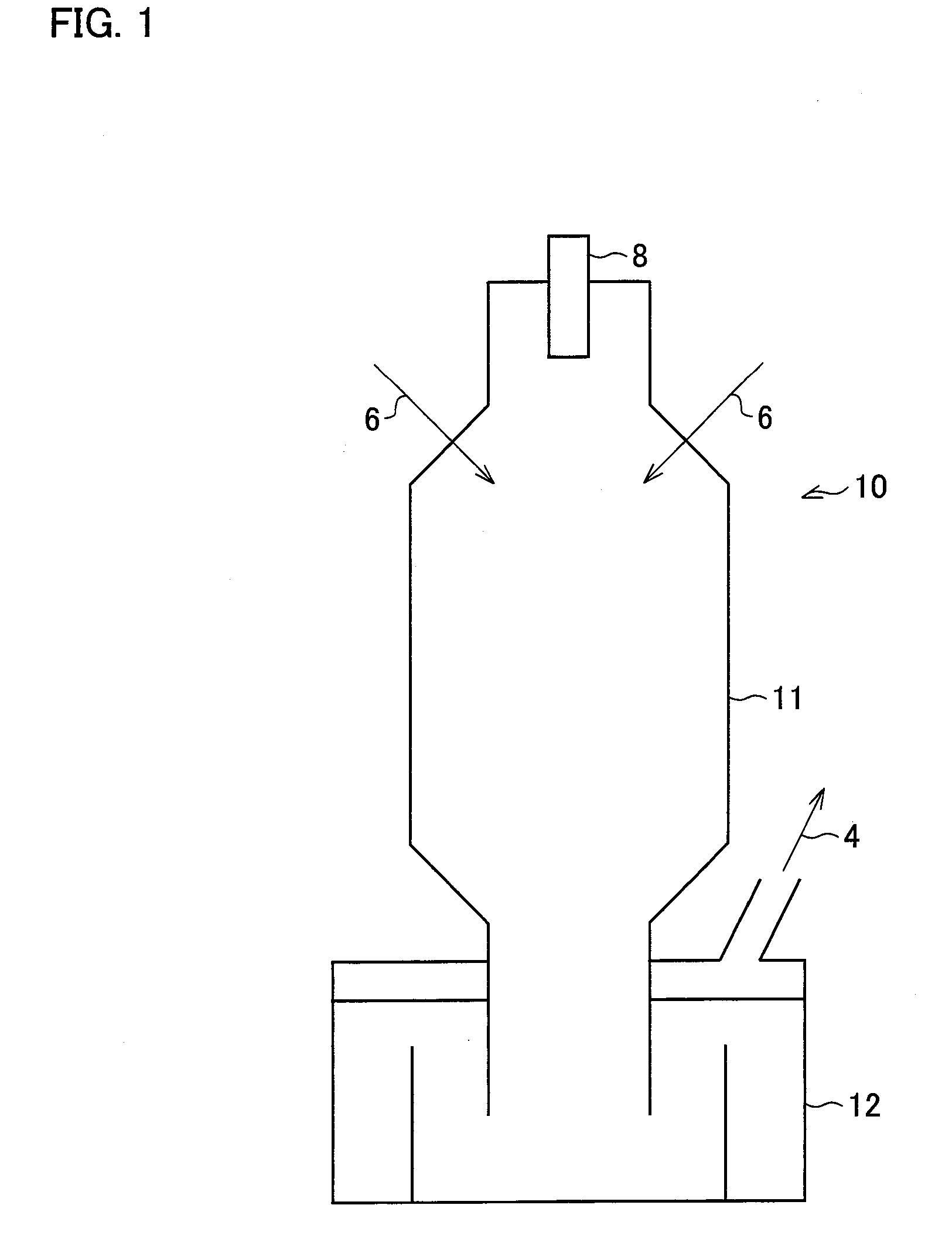Alkali metal iodide salt solution and method for producing the same
- Summary
- Abstract
- Description
- Claims
- Application Information
AI Technical Summary
Benefits of technology
Problems solved by technology
Method used
Image
Examples
example 1
[0065]First, a liquid composed of components shown in Table 1 below was prepared. Moreover, in Example 1 and Example 2, components of compounds shown in the tables are measured by the following methods.
[0066]Sodium iodide was measured by a titration method in which an aqueous 0.1N AgNO3 solution is used as a reagent.
[0067]Column: TOSOH ODS-80TM 4.6×150 mm
[0068]Column temperature: 40° C.
[0069]Carrier:acetonitrile:water=4:6 (v:v) (TEA-AcOH 0.1 vol %)
[0070]Flow rate: 1.0 mL / min
[0071]Detection wavelength: 230 nm
[0072]Internal Control: dimethyl phthalate
(Methanol, Dimethylformamide, Isobutanol, and Water)
[0073]Column: chromosolve 102, 1.1 m
[0074]Column temperature: 70° C.→20° C. / min→200° C. (13 min)
[0075]Carrier: He (40 mL / min)
[0076]Detection: TCD (75 mA)
[0077]Internal Control: acetonitrile
TABLE 1Sodium iodide (NaI)14.0 gMethanol (MeOH)12.6 gDimethylformamide (DMF)76.4 gIsobutanol (i-BuOH)30.6 gTriphenylphosphine oxide (TPPO)19.6 gWater (H2O)16.8 ...
example 2
[0080]A liquid, which is composed of components shown in Table 3 below, was prepared.
TABLE 3Sodium iodide (NaI)2.9 kgMethanol (MeOH)2.7 kgDimethylformamide (DMF)15.8 kg Isobutanol (i-BuOH)6.1 kgTriphenylphosphine oxide (TPPO)4.0 kgWater (H2O)3.5 kg
[0081]A reduced-pressure distillation was performed on the liquid to remove the solvent, under the condition of: 13 kPa; steam temperature in a range of 45° C. to 85° C. With this, MeOH 2.7 kg, DMF 11.7 kg, i-BuOH 6.1 kg, and H2O 2.3 kg were distilled off. Next, water of 80° C. was added by 26.2 kg as a deposition solvent. With this, TPPO was deposited and the deposited TPPO was filtered. Through the operation, a liquid for combustion was obtained. Table 4 below shows the composition of the liquid at the time.
TABLE 4Sodium iodide (NaI)2.77 kg (residual rate 95.0%)Methanol (MeOH) 0.0 kg (removal rate 100%)Dimethylformamide (DMF)4.14 kg (removal rate 73.8%)Isobutanol (i-BuOH) 0.0 kg (removal rate 100%)Triphenylphosphine oxide (TPPO)0.07 kg (...
PUM
| Property | Measurement | Unit |
|---|---|---|
| Temperature | aaaaa | aaaaa |
| Temperature | aaaaa | aaaaa |
| Deposition rate | aaaaa | aaaaa |
Abstract
Description
Claims
Application Information
 Login to View More
Login to View More - R&D
- Intellectual Property
- Life Sciences
- Materials
- Tech Scout
- Unparalleled Data Quality
- Higher Quality Content
- 60% Fewer Hallucinations
Browse by: Latest US Patents, China's latest patents, Technical Efficacy Thesaurus, Application Domain, Technology Topic, Popular Technical Reports.
© 2025 PatSnap. All rights reserved.Legal|Privacy policy|Modern Slavery Act Transparency Statement|Sitemap|About US| Contact US: help@patsnap.com


